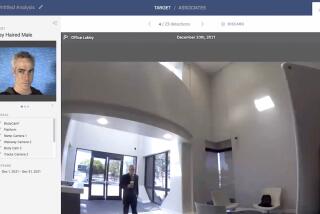Identifying the Leader Somebody has to be first.
- Share via
The automated fingerprint identification industry is about as fragmented as the fingerprints it processes: No two companies are alike, nor is their equipment. As a result, if the police in Placentia need to see if a certain suspect’s prints match ones on filed with the Sheriff’s Department in Santa Ana, a major, time-consuming and expensive task often ensues.
Anaheim’s Printrak International Inc. has decided that the industry won’t grow until everybody’s equipment can process everybody’s images. So the company has announced that it will now make its proprietary fingerprint image processing technology available to competitors who want their equipment to be able to read prints sent by police agencies that use Printrak systems.
The issue is compatibility. Police agencies can’t begin working together until the vendors provide the technology, Printrak maintains. The process of feeding a fingerprint image into a computer graphic file involves about 2 billion computer operations per print. The process begins with “mapping” the fingerprint image pixel by pixel. Extracting data to compare prints involves a number of processes including identifying the points where the fingerprint ridges divide or end. As many as 150 points per print may be needed to ensure the reliability of a search-and-match operation.
Even small differences in encoding techniques can result in missed “hits” when points extracted by one system are matched against those stored in a database created by another system. Printrak’s offer opens its databases to the world and potentially paves the way for others to follow suit, company President David McNeff says.
John O’Dell can be reached at (714) 966-5831 and at john.odell@latimes.com
More to Read
Inside the business of entertainment
The Wide Shot brings you news, analysis and insights on everything from streaming wars to production — and what it all means for the future.
You may occasionally receive promotional content from the Los Angeles Times.










